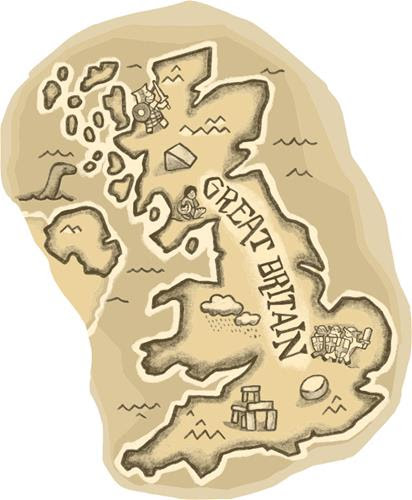“Territorial” is a term of art for traditional regional British cheeses. As a definition it’s a bit loosey goosey. It can mean an area as big as a county where a cheese was made, like when it’s used for Lancashire or Cheshire. Or it can be as specific as the town where the cheese was sold, like cheddar, which was made in Somerset county but sold at market in the town of Cheddar.
What all the British Territorial cheeses have in common is style and flavor.
Save Stilton, territorials are all pressed cheeses, which means a weight has been applied to squeeze out liquid whey, making the cheese dry and firm, not gooey and soft. Once aged, the cheeses sport a flaking, crumbling texture. There’s also a kick of acidity. They are not smooth and sweet in the mouth, which puts them in contrast to perennial favorites like gouda or Comté. British Territorials are defiantly distinct. They take a moment to get used to. I find their flavor utterly rewarding.
In their pre-industrial versions, territorials were what are known in the UK as “kitchen cheeses,” which, in typically straightforward English phrasing, literally means they were made in a kitchen and stayed in a kitchen. If there was milk left over from what the family farm needed for the day, it was rescued from rot to become cheese. Mostly for home use, maybe a bit to sell. As territorials became more popular they moved from kitchen to professional creamery. By the early 20th century, all of these cheeses would have been made for market by dozens–if not hundreds–of small-scale cheesemakers. All that changed with World War II, when milk was pooled together for rations. Fast forward to 2018 and there is often just one cheesemaker remaining for a given territorial. Thus the other feature that British Territorials have in common, unfortunately, is near extinction.
The go-to source for the last great examples of British Territorials is Neal’s Yard Dairy. You can taste and buy cheeses firsthand at their Borough Market or Covent Garden shops in London. They also export to the USA. We’ve been hand cutting and wrapping them to order, then shipping across the country, for a quarter of a century.
Storing Territorials
Territorials are adapted to the temperatures of an ambient 19th Century, not a refrigerated 21st Century one. British ambient, that is. Cool-ish, wet-ish. The best American alternative you’ll probably find is your salad crisper with plenty of salad nearby for humidity. Avoid plastic wrapping. The cheese bag we send them with is great. If you don’t have one wrap them your cheese in waxed paper or aluminum foil.
Serving Territorials
Neal’s Yard Dairy’s experienced cheesemonger and partner Jason Hinds remarked to me, “Modern cheeses are more affected by heat than cold. Territorials are the opposite.” I agree. You really need to warm these up to make them taste right, to have them flaking and crumbling like they should. Take the whole wedge out of the fridge an hour or two before you want to serve it. You can lay a wet, wrung out cloth over it if it appears to get a bit too dry before you eat.

